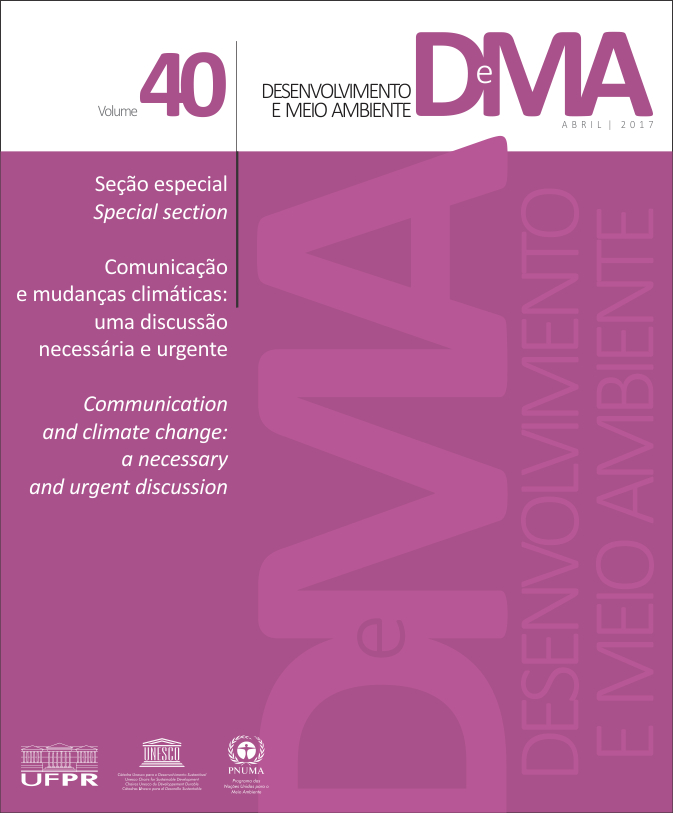Brazilian Media and Climate Change: Analysis of Media Coverage Trends, Approaches and Criteria of Newsworthiness
DOI:
https://doi.org/10.5380/dma.v40i0.49002Keywords:
media, climate change and energy, coverage, criteria of newsworthiness, BrazilAbstract
The media have an important role in invigorating the public sphere and creating a forum for public discourse. This is especially critical for climate change and the public understanding of this phenomenon, including its uncertainties, controversies, risks and threats as well as future projections and coping possibilities. The media offer to the individuals symbolic forms of representing their relations with the phenomenon, and have the responsibility to represent complex issues related to climate change, seeking to connect them to the experiences of modern life. Understanding how the media have covered and diffused these issues is a big challenge for researchers who work on the triad science – communication – society. This paper seeks to contribute to this analytical field and filling the gap in terms of Brazilian studies focused on climate change and coverage, presenting and discussing results of a study conducted between 2014 and 2016, which aimed: (i) to understand the coverage media of issues related to climate change and energy throughout an analyses of news published between 2000 and 2014 in a large national Brazilian newspaper; (ii) to understand journalists’ perceptions of media coverage on climate change through content analysis of interviews with Brazilian professionals who cover these issues. Results are presented and discussed considering three arguments: (i) tendency for an event-centred coverage reporting; (ii) change in the coverage trends of climate change along the years; (iii) adoption of criteria of newsworthiness to select information and cover climate change, including sense of opportunity, interest for human and conflict.
Downloads
Published
How to Cite
Issue
Section
License
Copyright on works published in this journal rests with the author, with first publication rights for the journal. The content of published works is the sole responsibility of the authors. DMA is an open access journal and has adopted the Creative Commons Attribution 4.0 Not Adapted (CC-BY) license since January 2023. Therefore, when published by this journal, articles are free to share (copy and redistribute the material in any medium or format for any purpose, even commercial) and adapt (remix, transform, and create from the material for any purpose, even commercial). You must give appropriate credit, provide a link to the license and indicate if changes have been made.
The contents published by DMA from v. 53, 2020 to v. 60, 2022 are protected by the Creative Commons Attribution-NonCommercial-NoDerivatives 4.0 International license.
DMA has been an open access journal since its creation, however, from v.1 of 2000 to v. 52 of 2019, the journal did not adopt a Creative Commons license and therefore the type of license is not indicated on the first page of the articles.




